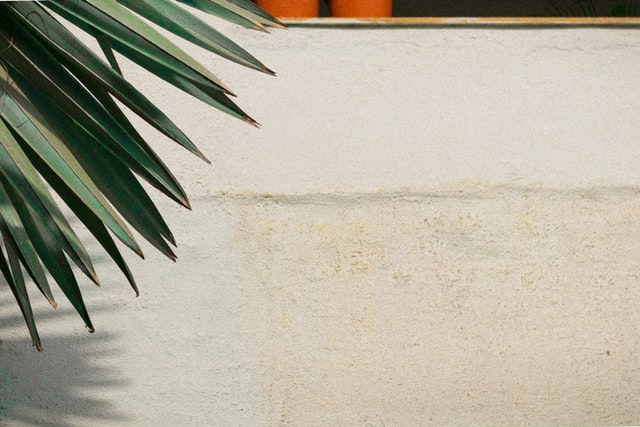Stucco is a low-maintenance building material made primarily of limestone, concrete, and sand, with some additions of clay and other materials. Because of its distinct texture, it is a popular choice for use as an exterior building material for home walls, as well as for back garden walls. However, because of the porous composition and uneven texture of stucco, dirt, mold, and mildew can accumulate on the surface, making it necessary to sanitize and clean stucco on a regular basis.
Cleaning Stucco: Steps to Follow
- The surface should be thoroughly cleaned with a garden hose.
- Fill the detergent tank of the pressure washer with a large bottle as well as Siding Cleaner, or drop the syphon tube into the carton.
- With the 65-degree nozzle tip and a low-pressure setting on your pressure washer, spray Simple Green onto your siding in sections from bottom to top.
- Using the 25 – 40-degree nozzle tips, thoroughly rinse the entire body with clean water from top to bottom. Remember to keep the 25-degree tip at a safe distance from the stucco in order to avoid damaging the material.
Begin the cleaning process for the stucco
The process of cleaning the stucco can begin after you have ensured that there are no problems or have resolved any problems that you may have encountered. Take a glance at the items on the following list.
- Hose for the garden and an attachment
- Bucket
- A sponge with a lot of durability.
- The use of a high-pressure washer is recommended.
- Bristle brush with a soft texture
- Disinfectant
Using a power washer, if you have one or can borrow one, may be a good option. However, be sure you know how to utilize it properly. Recall that stucco’s porous surface will be damaged by excessive pressure, so use caution when applying pressure. Before rinsing the stucco surface at the a 45-degree angle, twice that amount that there’s at least 20 – 25 inches in between nozzle and the surface.
Removal of dust
Then, once all the dirt is cleaned, you may mix dish soap, borax, and water together to form a cleaner. Combine the ingredients in a large mixing bowl with 2 gallons of hot water, 1/2 cup of baking soda, and one tablespoon of liquid dish soap, stirring thoroughly. If you prefer using a pressure washer to complete this work, apply the solutions at a lower setting with a 65-degree tip, allowing 18–24 inches here between nozzle tip as well as the stucco surface. Allow it to sit for 5-10 minutes.
- Stucco should be cleaned thoroughly
You will have to scrub really hard in some areas where there is rust or other heavy stains. While the wall has still been saturated with cleaning liquid, use an increased rotating scrubbing brush attachment for work on worst spots on the wall. Scrub rust slowly and carefully if you’re dealing with a problem.
- To ensure that all cleaning solution residue is removed from the first part, it should be properly washed
Our low-pressure spray tip nozzles may be connected to a pressure washer’s hose with the help of the provided adaptor. Work your way down the wall from the top to the bottom, wash the solution off each part as you go and make sure to begin just at top of the wall. You would be able to watch the dirt going down the wall once you have started just at top of it. Remove any remaining cleaning solution from the surface of the wall by carefully rinsing it.
- Saturate the next portion of the walls with the solution
Replicate the previous steps and allow the solution to sit for five to ten minutes before rinsing it away with a high-pressure water nozzle. It is important to thoroughly rinse away the cleaners, making your way from top to bottom, in order to guarantee that almost all residue is totally and thoroughly gone.
- Carry out a spot check on the situation
The stucco should be examined with care. By passing over the entire area again, you can ensure that you have not yet missed any dirt. It will be easier to eliminate any leftover stains if you use cleanser and pressure rinse several times, as necessary. To paint the wall, allow it to dry for a limited number of hours before beginning the painting process.
Steps for Clean Stucco
- Check for chips or cracks in the stucco before painting. If users come across any, consider fix them yourselves or even have them properly repaired before you begin cleaning the stucco surface with water.
- Water the wall with your garden hose, starting from the bottom and work up, until it is thoroughly clean. This reduces surface soil and assures that any unclean water which runs down the wall from of the top of a wall while cleaning will not be absorbed into the wall.
- In a bucket, combine one-part saturated bleach powder with ten parts waters to make a cleaning solution. After mixing in the liquid dish soap, pour the cleaning solution into an outside garden sprayer to use as needed.
- Spray the walls with the mild detergent once more, starting at the bottom and making your way up the surface.
- While cleaning, use a scrub toothbrush dipped in the cleaning solution to scrub away any stains that you detect. Be sure to work fast because you should only keep the cleanser just on stucco for 30 minutes or less.
- Once again, use your garden hose to thoroughly rinse the stucco, start from the top and making your way down a wall.
- Making a paste by mixing powdered laundry detergent containing trisodium phosphate with water is last step.Remove any leftover stains from the surface of the water with a scrubbing brush before rinsing thoroughly. Make sure to s new the stucco beneath the stain using water before proceeding with the treatment.
